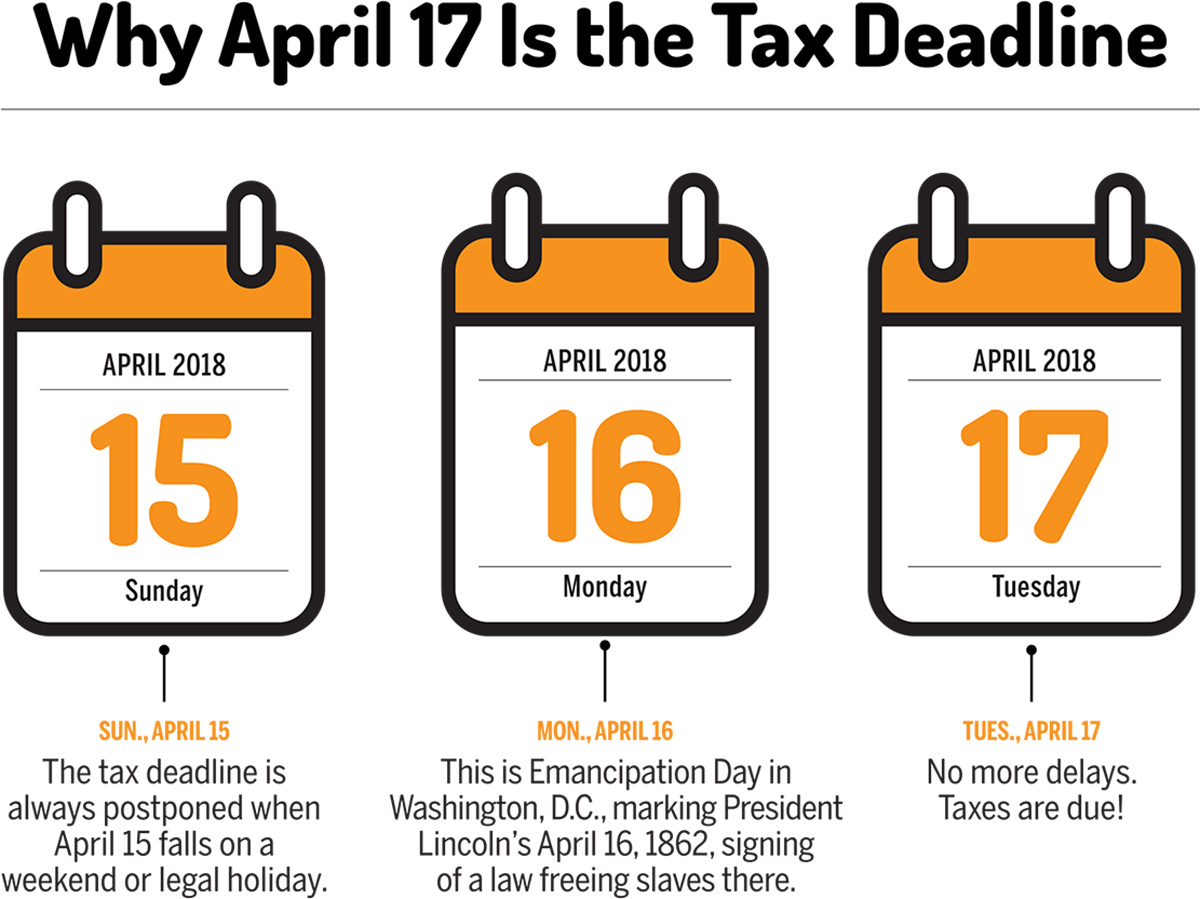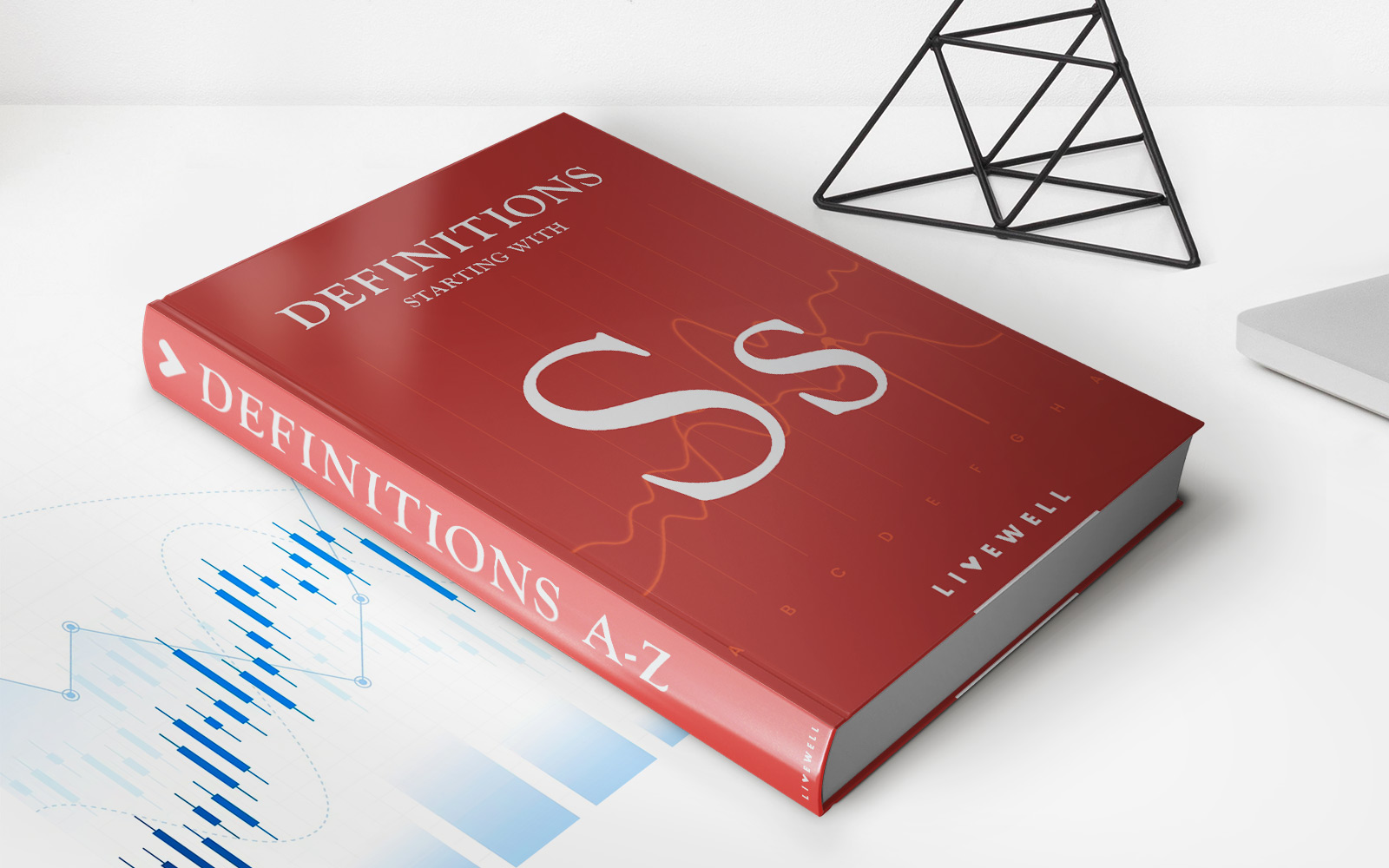

Finance
How To File A Fafsa Without A Tax Return
Published: November 2, 2023
Learn how to file a FAFSA without a tax return and secure your financial aid. Get expert tips and guidance on finance-related matters to maximize your benefits.
(Many of the links in this article redirect to a specific reviewed product. Your purchase of these products through affiliate links helps to generate commission for LiveWell, at no extra cost. Learn more)
Table of Contents
Introduction
For students seeking financial aid for college, filing the Free Application for Federal Student Aid (FAFSA) is a crucial step in the process. The FAFSA is used by federal and state governments, as well as colleges and universities, to determine the amount of financial aid a student is eligible for.
Traditionally, one of the key documents required to complete the FAFSA is the previous year’s tax return. However, there are situations where students may not have access to their or their parents’ tax returns, or their financial situation may have changed significantly. In such cases, it is still possible to file the FAFSA without a tax return.
In this article, we will explore the various options available to students who need to file the FAFSA but do not have a tax return. We will also discuss the necessary steps and documentation needed to complete the FAFSA accurately and efficiently.
Understanding the FAFSA
The Free Application for Federal Student Aid (FAFSA) is a form that students must complete to determine their eligibility for financial aid from the federal government, state governments, and colleges or universities. The FAFSA takes into account various factors, such as the student’s family income, assets, household size, and the number of family members attending college.
The information provided on the FAFSA is used to calculate the Expected Family Contribution (EFC), which is the amount of money the student and their family are expected to contribute towards their education. The EFC is used to determine the student’s eligibility for grants, scholarships, work-study programs, and federal student loans.
The FAFSA is a critical step in accessing financial aid for college, as many scholarships, grants, and loans require students to have a FAFSA on file. It is important to note that the FAFSA is available for free, and students should be cautious of any websites or services that charge a fee to help complete the FAFSA.
The FAFSA application opens on October 1st each year, and the deadline to submit the FAFSA varies depending on the state and institution. It is recommended to submit the FAFSA as early as possible to maximize the chances of receiving aid since some programs have limited funds available.
Now that we have a basic understanding of the FAFSA, let’s explore the options available for students who need to file the FAFSA without a tax return.
Options for Filing FAFSA without a Tax Return
While the traditional method of filing the FAFSA requires the submission of tax returns, there are alternatives available for students who do not have access to their tax information. Here are some of the options to consider:
- Use Estimated Financial Information: If the student or their parents are unable to obtain their tax return, they can use estimated financial information on the FAFSA. This can include the total income earned, taxes paid, and other financial details. It is important to provide the most accurate estimates possible to avoid discrepancies.
- Use the IRS Data Retrieval Tool (DRT): The IRS Data Retrieval Tool is a convenient option for students and parents who have filed their tax return but do not have a copy readily available. The tool allows FAFSA applicants to automatically import their tax information from the IRS database, ensuring accuracy and efficiency in the application process.
- Request a Tax Return Transcript: If the student or their parents are unable to obtain a copy of their tax return, they can request a Tax Return Transcript from the IRS. This document provides a summary of the tax return, including key financial information. The Tax Return Transcript can be used to accurately complete the FAFSA.
- File an Amended Tax Return: In some cases, the student or their parents may have filed an amended tax return due to changes in their financial situation. If this is the case, the amended tax return can be used to complete the FAFSA. It is important to provide all relevant documentation to support the amended return.
- Submit a Non-Filing Letter: If the student or their parents did not file a tax return for the previous year, they can request a Non-Filing Letter from the IRS. This document confirms that no tax return was filed for the tax year in question. The Non-Filing Letter can be used as an alternative to the tax return when completing the FAFSA.
It is important to note that each of these options has specific requirements and may vary depending on individual circumstances. Students are encouraged to consult with the financial aid office at their chosen college or university for guidance on the best approach to filing the FAFSA without a tax return.
Gather the Necessary Documents
When filing the FAFSA without a tax return, it is essential to gather all the required documents to ensure accurate completion of the application. Here are the necessary documents you will need:
- Social Security Numbers: Make sure to have the Social Security Numbers for both the student and their parents, as they will be required to complete the FAFSA accurately.
- Records of Income: If you do not have access to the previous year’s tax return, gather any available documents that reflect your income. This can include pay stubs, W-2 forms, or additional documents that indicate earned wages or other sources of income.
- Bank Statements: Collect recent bank statements for both the student and their parents. These statements should reflect any savings, checking accounts, or investments that can contribute to the calculation of the expected family contribution.
- Records of Untaxed Income: If you or your parents have any sources of untaxed income, such as child support, workers’ compensation, or veteran benefits, make sure to gather the necessary documentation to accurately report these amounts.
- Parental Information: If you are required to provide parental information on the FAFSA, gather details such as their birth dates, marital status, and educational backgrounds.
- Other Personal Information: Have the student’s driver’s license or state ID, and any other relevant personal information readily available.
By gathering these necessary documents ahead of time, you can ensure a smoother and more efficient completion of the FAFSA without a tax return. It is essential to provide accurate and up-to-date information to avoid delays or inaccuracies in your financial aid application.
Using the IRS Data Retrieval Tool
The IRS Data Retrieval Tool (DRT) is a valuable resource for students and parents who have previously filed their tax return but do not have a copy readily available. The tool allows FAFSA applicants to automatically import their tax information from the Internal Revenue Service (IRS) database, streamlining the application process and ensuring accuracy.
Here’s how to use the IRS Data Retrieval Tool:
- Access the FAFSA: Start by accessing the official FAFSA website and begin the application process.
- Select the DRT Option: When prompted to enter your financial information, choose the option to use the IRS Data Retrieval Tool.
- Authenticate Identity: You will be redirected to the IRS website, where you will need to authenticate your identity by providing your name, Social Security Number, and date of birth. It is crucial to enter this information exactly as it appears on your tax return.
- Retrieve Tax Information: Once your identity is verified, you can select the option to transfer your tax information directly from the IRS into the FAFSA application. This will populate the required fields accurately and save time.
- Review and Submit: After the tax information is transferred, review the populated fields to ensure accuracy. Make any necessary corrections or updates before submitting the FAFSA.
The IRS Data Retrieval Tool offers numerous benefits. First, it minimizes the risk of errors or inconsistencies in financial information since the data is directly imported from the IRS database. Second, it simplifies the FAFSA completion process, saving time and effort. Lastly, using the DRT reduces the likelihood of being selected for verification, where additional documentation may be required to support the reported income and tax information.
However, it’s important to note that not all FAFSA applicants are eligible to use the IRS Data Retrieval Tool. Certain circumstances, such as recent changes in marital status or other financial complexities, may prevent the use of the DRT. In such cases, applicants will need to manually enter their financial information.
By utilizing the IRS Data Retrieval Tool, you can streamline the FAFSA process and ensure accurate reporting of your tax information, even if you do not have immediate access to your tax return.
Completing the FAFSA Form
Completing the FAFSA form accurately is essential to ensure eligibility for financial aid. When filing the FAFSA without a tax return, there are a few key steps to follow:
- Provide Personal Information: Begin by providing your personal information, including your name, Social Security Number, date of birth, and contact details. If you are a dependent student, you will also need to provide parental information.
- Select Filing Status: Indicate whether you have already filed your tax return or will file later. If you are not required to file a tax return, select the appropriate option.
- Enter Financial Information: If you do not have access to your or your parents’ tax return, provide estimated financial information. This includes income earned from work, government benefits, and any untaxed income. Be as accurate as possible with your estimates.
- Use the IRS Data Retrieval Tool (if eligible): If you are eligible and have previously filed your tax return, use the IRS Data Retrieval Tool to transfer your tax information directly into the FAFSA form. This ensures accuracy and saves time.
- Answer Dependency Status Questions: Depending on your situation, you may need to answer questions about your dependency status. This includes queries about marital status, military service, and any dependents you support.
- Select Schools: Include the schools you are considering attending. The FAFSA information will be sent to the financial aid offices of the schools you list, allowing them to assess your eligibility for aid.
- Review and Submit: Review all the information you have provided on the FAFSA form. Make sure everything is accurate and up-to-date. Once you are confident with your answers, submit the form. You will receive a confirmation page upon successful submission.
It’s important to remember that the FAFSA form may be different for each academic year. Therefore, it is crucial to fill out the FAFSA for the applicable year and meet any specified deadlines.
After submitting the FAFSA, you may receive a Student Aid Report (SAR), which summarizes the information you provided. Review the SAR carefully and make corrections, if necessary. The SAR will also contain your Estimated Family Contribution (EFC), which is the amount you and your family are expected to contribute towards your education.
By accurately completing the FAFSA form, you give yourself the best chance of receiving financial aid that can make pursuing higher education more affordable.
Submit and Follow Up on Your FAFSA Application
Once you have completed and submitted your FAFSA application, there are a few important steps to follow up on to ensure that your application is processed accurately and efficiently:
- Double-Check Submission: After submitting your FAFSA, make sure to review the confirmation page or email to ensure that your application was successfully received. If you do not receive a confirmation or notice of submission, contact the Federal Student Aid Information Center or the financial aid office of your intended college or university to inquire about the status of your application.
- Review Student Aid Report (SAR): Approximately three to five days after submitting your FAFSA, you will receive your Student Aid Report (SAR) via email or postal mail. Review the SAR carefully to ensure that the information provided is accurate. If any corrections or updates are needed, follow the instructions provided to make the necessary changes.
- Respond to Verification Requests: In some cases, your FAFSA application may be selected for verification. This means that you will need to provide additional documentation to verify the accuracy of the information provided on your FAFSA. If selected for verification, promptly respond to any requests from the financial aid office and submit the required documentation as soon as possible.
- Monitor Financial Aid Award Letters: Once your FAFSA has been processed and your eligibility has been determined, you will receive financial aid award letters from the colleges or universities to which you have applied. These letters outline the types and amounts of financial aid you have been offered. Carefully review these letters and compare the financial aid packages from different schools to make an informed decision.
- Contact Financial Aid Office: If you have any questions or concerns about your financial aid package or need to discuss your unique circumstances, reach out to the financial aid office of the college or university directly. They are there to assist you throughout the process and can provide guidance on any additional steps you need to take.
- Submit Acceptance of Aid: Once you have evaluated your financial aid options and made a decision on which college or university to attend, follow the instructions provided by the financial aid office to formally accept or decline the financial aid offered. This step is crucial to secure the financial aid you are eligible for.
Remember, filing the FAFSA is just the first step in the financial aid process. Following up and staying proactive will help ensure that your application is processed accurately and that you are receiving the maximum financial aid available to you.
Alternative Documentation for Special Circumstances
In certain situations, students may have special circumstances that prevent them from providing the usual documentation required for the FAFSA. In such cases, alternative documentation may be accepted to accurately reflect their financial situation. Here are some examples of special circumstances and the alternative documentation that can be provided:
- Unusual Income: If you or your family have experienced a significant decrease in income due to unemployment, job loss, or other circumstances, you can provide documentation such as unemployment benefits, severance pay records, or letters from employers explaining the change in income.
- Recent Divorce or Separation: If your parents have recently divorced or separated, and you are unable to provide their tax return or financial information, you may submit documentation to demonstrate the change in marital status, such as legal separation or divorce papers.
- Exceptional Medical Expenses: If you or your family have incurred substantial medical expenses that are not covered by insurance, you may provide documentation such as medical bills, receipts, or an explanation of the expenses to support your request for additional financial aid.
- Homelessness or Foster Care: Students who are experiencing homelessness or have been in foster care can work with their school’s financial aid office to provide documentation confirming their situation. This may include letters from shelters, social services, or other relevant organizations.
- Disability Expenses: If you or your family have significant disability-related expenses that are not covered by insurance, you can submit documentation such as medical bills, receipts, or a letter from a healthcare professional explaining the expenses incurred.
It is important to keep in mind that each situation is unique, and alternative documentation requirements may vary among colleges and universities. If you find yourself in one of these special circumstances or any other situation that prevents you from providing the standard documentation, contact the financial aid office of your chosen institution for guidance on the specific alternative documentation they will accept.
By providing appropriate alternative documentation, you can ensure that your financial aid application accurately reflects your unique circumstances and increase your chances of receiving the financial support you need to pursue your educational goals.
Conclusion
Filing the Free Application for Federal Student Aid (FAFSA) is an important step for students seeking financial aid for college. While the traditional method of filing the FAFSA requires the submission of tax returns, there are options available for those who do not have access to their tax information. By utilizing alternative documentation and resources, students can still complete the FAFSA accurately and efficiently.
Understanding the FAFSA and its significance in the financial aid process is vital. The FAFSA takes into account various factors to determine a student’s eligibility for grants, scholarships, work-study programs, and federal student loans. It is important to file the FAFSA early and meet all applicable deadlines to maximize the aid opportunities available.
Options for filing the FAFSA without a tax return include using estimated financial information, utilizing the IRS Data Retrieval Tool (DRT) to transfer tax information directly from the IRS database, requesting a Tax Return Transcript, filing an amended tax return if necessary, or submitting a Non-Filing Letter from the IRS. Each option has specific requirements and may vary depending on individual circumstances.
Throughout the FAFSA process, it is crucial to gather the necessary documents, provide accurate information, and review the application before submission. Following up on the application, responding to verification requests, reviewing student aid reports, and contacting the financial aid office are important steps to ensure the completion and success of the application process.
In some instances, students may have special circumstances that prevent them from providing standard documentation. In these cases, alternative documentation can be utilized to accurately represent their financial situation, such as for unusual income, recent divorce, exceptional medical expenses, homelessness, or disability expenses.
Filing the FAFSA without a tax return may present some challenges, but with careful preparation and utilizing the available resources, students can successfully complete the application and secure the financial aid they need for college. By staying informed, proactive, and submitting accurate information, students can maximize their chances of receiving the financial aid that will make their higher education dreams a reality.














